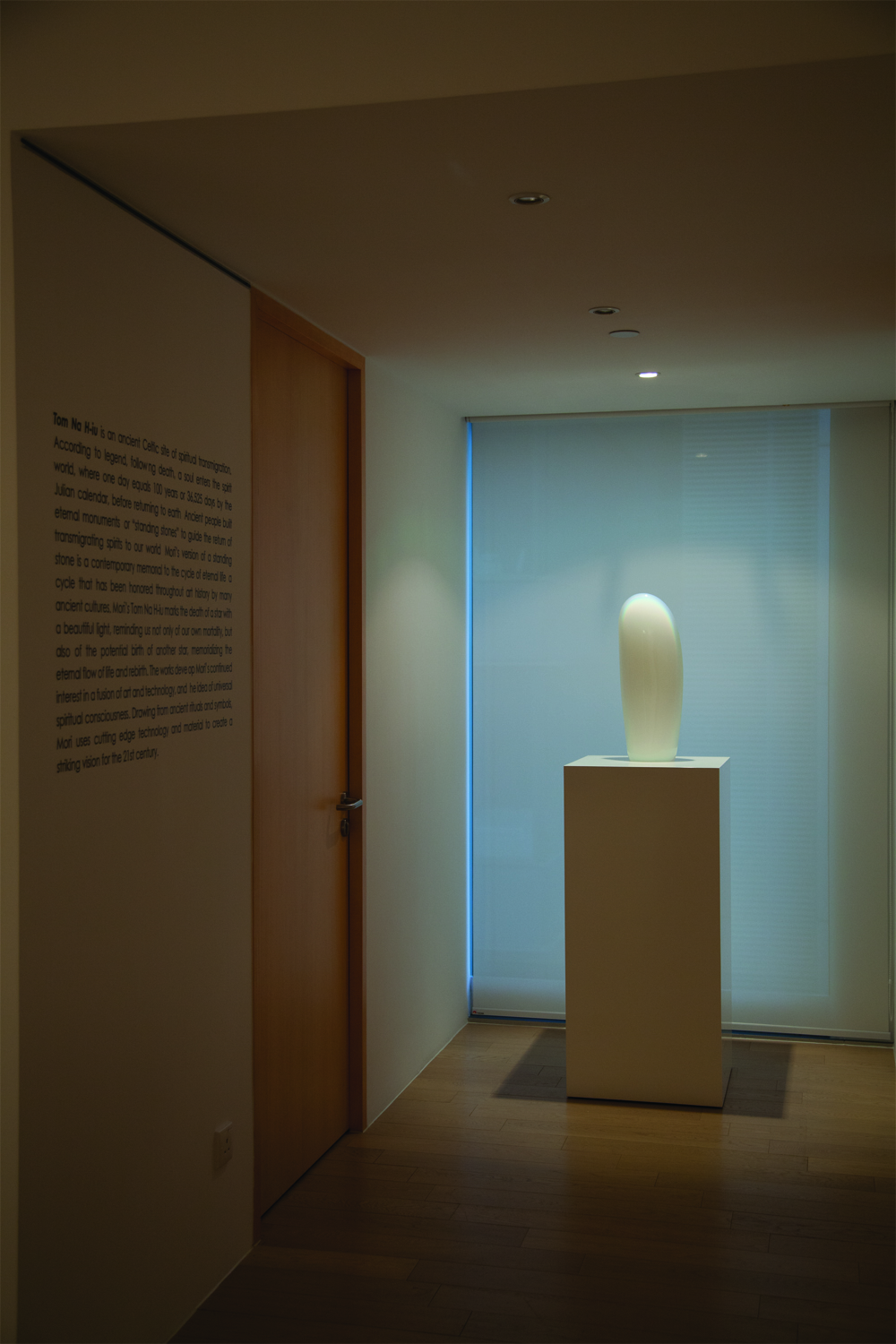Shows
Mariko Mori’s “Flatstone”


Japanese artist Mariko Mori recently held a major exhibition at London’s Royal Academy of Arts, which showcased key pieces created over the past decade. Last month, two acclaimed artworks from the retrospective were on view for the first time in Hong Kong at de Sarthe Gallery.
Titled “Mariko Mori: Flatstone,” this modest exhibition consisted of the floor installation Flatstone (2006) and the sculpture Tom Na H-iu (2006), the latter of which perhaps best captures the artist’s gradual transition away from her earlier self-portraits. Since the late 1990s, Mori has been increasingly inspired by her observations of nature, her works conveying universal concerns of the human experience.
One aspect of Mori’s highly diverse oeuvre reflects her growing interest in prehistoric cultures, leading to her archaeological fieldwork. The title work of this exhibition emerged out of the artist’s research into the people of Japan’s mid-Jōmon era (3500 to 2500 BCE), an agrarian society that honored spirits of nature.
Upon entering the gallery space, viewers were greeted with Flatstone's 22 white ceramic forms, each resembling a smooth, large-scale pebble. These stones create a visual path, the viewer’s gaze following their circular expansion outward from an ornate acrylic vase at their center. Alluding to the Jōmon shrines used in ceremonies celebrating the arrival of the winter solstice, the stones are a moment of transition, or renewal, from winter to spring.
The work was originally meant to be displayed indoors, but gallery founder Pascal de Sarthe, who owns the piece, asked for the artist’s permission to display it outside, having limited room in his home. Mori made slight material alterations to Flatstone to accommodate the outdoor setting, but one cannot help but question whether this new location, and the consequent exposure to the elements have stunted the work. What was originally a clear, translucent vase now looks golden, having undergone a natural weathering process.

While Flatstone’s expansive display took up the main exhibition space, Mori’s Tom Na H-iu was tucked in the corner, at the end of the adjacent hallway. With similar contours to the ceramic stones, this acrylic sculpture stands erect, its translucent surface catching the light and revealing its pearl-like luster.
The work derives its name from an “in-between” place, where, according to ancient Celtic mythology, souls waited to be reborn. The monoliths were placed to guide spirits back to the earthly realm. Mori’s adaptation references this belief, while also doubling as a metaphorical gateway to the universe, where stars also undergo a cyclic life journey. Her larger sculpture of the same name is lined with LED lights, which connect to an observatory at the Institute for Cosmic Ray Research in the University of Tokyo, flashing as supernova explosions occur in the universe. The death of one star is used to create new patterns of light. Disappointingly, this smaller version of Tom Na H-iu remains merely a shell, and the connection with the cosmos is lost, even if its intimate scale, simple form and iridescent surface succeed in retaining elements of the eternal.
Though small in scope, one should not underestimate the substance of this show. The strength of Mori’s works lies in her ability to layer meaning while preserving a minimalist aesthetic. Perhaps giving Tom Na H-iu more space might have enhanced the viewing experience, allowing visitors to walk around the sculpture; nonetheless, the exhibition provided a moment of quiet refuge and contemplation amid Hong Kong’s bustle.
Sylvia Tsai is assistant editor of ArtAsiaPacific.







